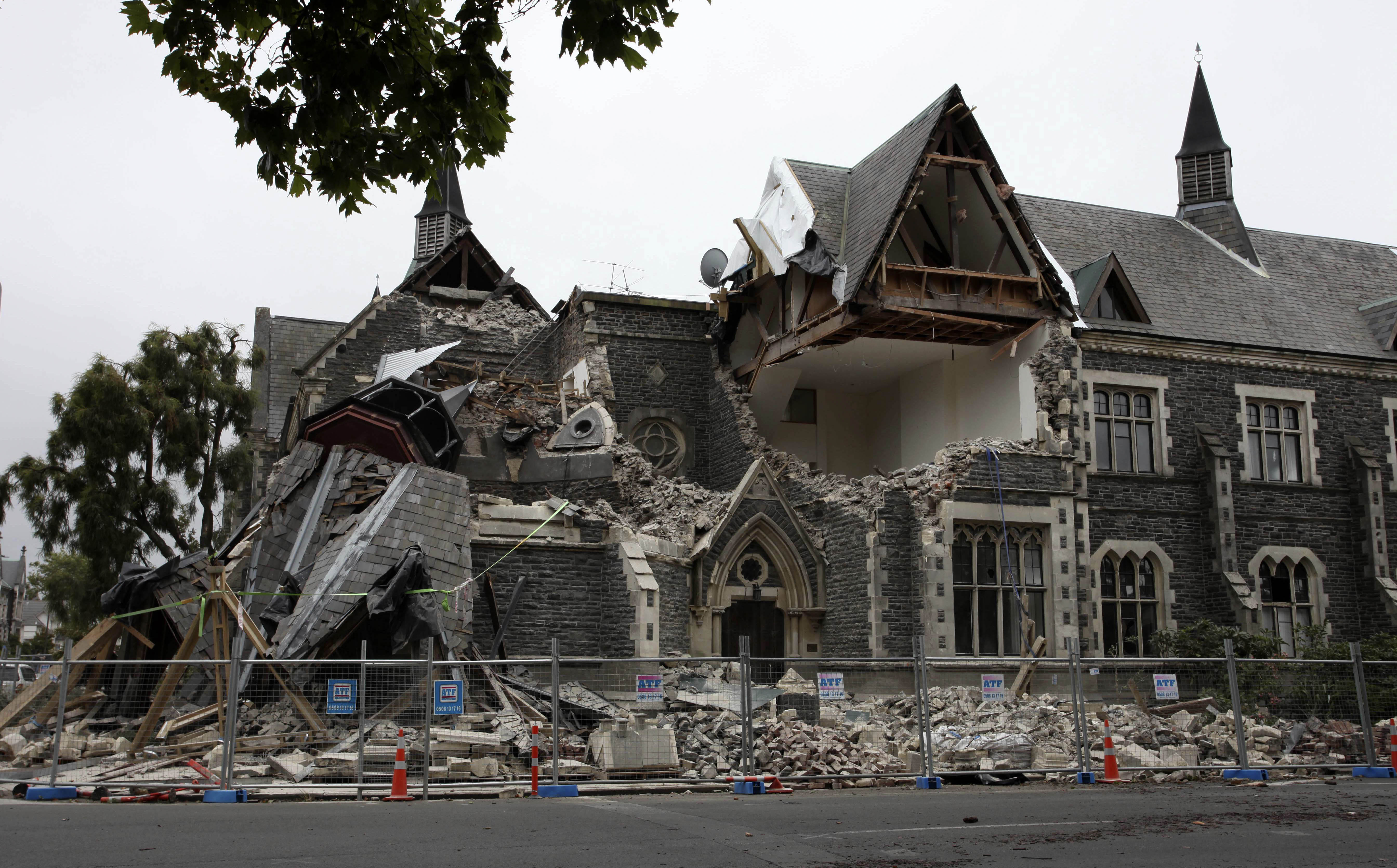By John M. Glionna and Rich Connell
Los Angeles Times
SYDNEY - The death count from New Zealand's massive earthquake was expected to climb past 75 with 300 people still missing as rescuers desperately scoured smoldering mountains of rubble from buildings destroyed in the country's worst seismic catastrophe in 80 years.
The scene Wednesday in Christchurch, the island nation's second-largest city near the epicenter of the 6.3-magnitude quake, was one of frenzied attempts to reach trapped victims, some of whom officials said were text messaging for help.
Others could be heard tapping signals as numerous aftershocks continued to hit the devastated city, causing thousands of skittish residents to crowd into temporary shelters, schools and community halls. Many tourists who had abandoned their hotels huddled in hastily pitched tents under a drizzling rain.
Prime Minister John Key said at a news conference that only 55 of 75 confirmed dead had been identified. He declared a state of national emergency, giving the government wider powers to respond to the crisis.
Laboring under floodlights Tuesday night, rescue workers used dogs to locate the injured and dead, and heavy equipment to pick away at piles of broken concrete, brick and crumpled metal. Using only their hands, workers threw aside heavy concrete slabs to free some victims with scarcely a bruise. Other trapped victims had to have limbs amputated to be extricated, Police Superintendent Russell Gibson told reporters.
Among nearly a dozen buildings where police believe survivors are still trapped, two city center buildings in particular suffered major damage and were the focus of the rescue efforts.
Authorities said 22 people had been rescued from the Pyne Gould Guinness Building and another 22 are believed to still be trapped underneath the rubble. Eight were pulled from the Canterbury television building, with a large number still unaccounted for.
Rescuers reported hearing screams for help from trapped people, some of whom talked to friends and relatives on cell phones from beneath the rubble. One woman called her children to say goodbye.
Authorities said the death toll is "rapidly evolving."
"We know it will be significant, and we know there are a lot of people going through the nightmare ordeal of waiting for news of their loved ones," Gibson said.
Authorities said that, at this point, their emphasis is on rescuing the living rather than recovering the dead.
On Wednesday, much of the city remained without water, although power and telephone service had been restored to many areas. With waste water pumping stations out of action, raw sewage is being pumped into the Avon River.
More than 235 police volunteers arrived at Christchurch from across New Zealand and the region, including specialist disaster-victim identification teams, urban search and rescue staff and police dog units.
Meanwhile, frantic calls from relatives looking for information about missing family members were pouring into crisis hotlines manned by local volunteers.
Seismologists said the shaking produced by the quake was some of the strongest on record. The damage to reinforced buildings, some of which followed standards used by quake-prone areas such as California and Japan, will prompt a reevaluation of current building codes, experts said.
Jason Ingham was at a Christchurch hotel preparing for a seminar on earthquake building standards Tuesday when the building began to shake. Ingham ran outside and saw people climbing out of the top floors of a hotel across the street, which was tilting to one side. The scene in the city center quickly turned to chaos.
"There was a mass exit of people in every direction," Ingham said. "The first mode was just to survive."
The prime minister said Christchurch had suffered "utter devastation."
"We may well be witnessing New Zealand's darkest day," Key said.
More than 400 rescuers from around the globe were expected to join the search effort, including a 74-member heavy rescue team from the Los Angeles County Fire Department.
The violent shaking that accompanied Tuesday's shallow quake about six miles from Christchurch, which sits midway down the east coast of New Zealand's southern island, not only ripped down walls of older masonry churches and historic structures, but severely damaged newer structures built to modern safety standards.
The highest ground acceleration recorded was close to twice the force of gravity, said Susan Hough, seismologist with the U.S. Geological Survey. "That's quite extreme shaking" and stronger than the movement forces in Haiti last year and Northridge, Calif., in 1994, she said.
The damage to earthquake-resistant buildings may indicate "we still have some things to learn" about improving building codes, Hough said.
The quake also provided dramatic evidence of the threat major quakes pose, even after the initial temblor is fading from memory. Seismologists said the Tuesday quake was an aftershock to a 7.0-magnitude quake that hit New Zealand on Sept. 4. That quake was deeper and caused no fatalities.
Thomas Jordan, director of the Southern California Earthquake Center at the University of Southern California, said the most destructive quake can be an aftershock to the main quake. Aftershocks since the September main quake have been moving eastward in recent months, closer to Christchurch.
"Earthquakes don't happen individually, but in sequences. We have to be prepared that when we get large earthquakes in California that we recognize that that means the seismic hazard has gone up, not down. One earthquake does not mean the end of story," Jordan said.
New Zealand's worst earthquake, on the country's North Island, hit in 1931 and killed more than 250 people.
---
(Glionna reported from Sydney and Connell from Los Angeles. Staff writers Sam Allen and Rong-Gong Lin II in Los Angeles contributed to this report.)
---
Distributed by McClatchy-Tribune Information Services.

